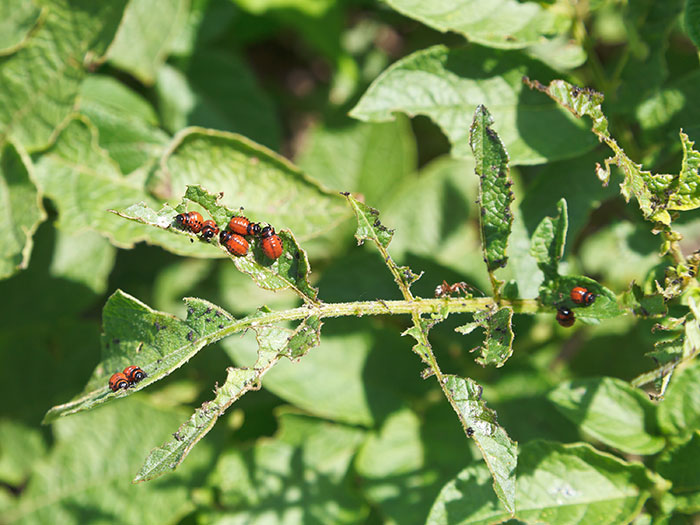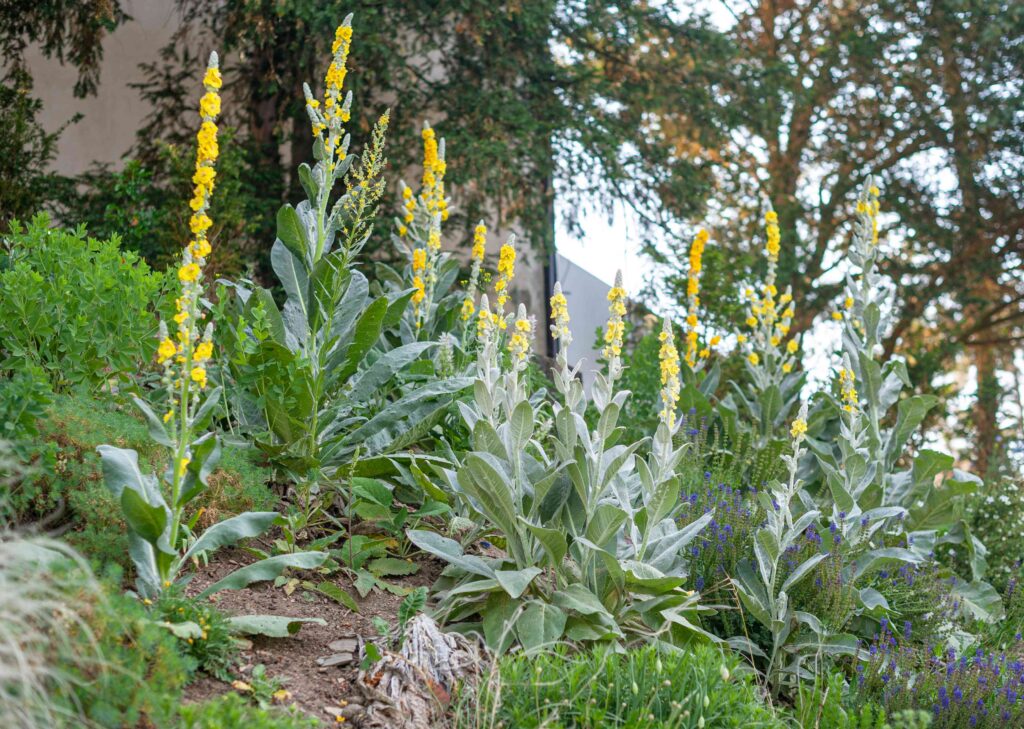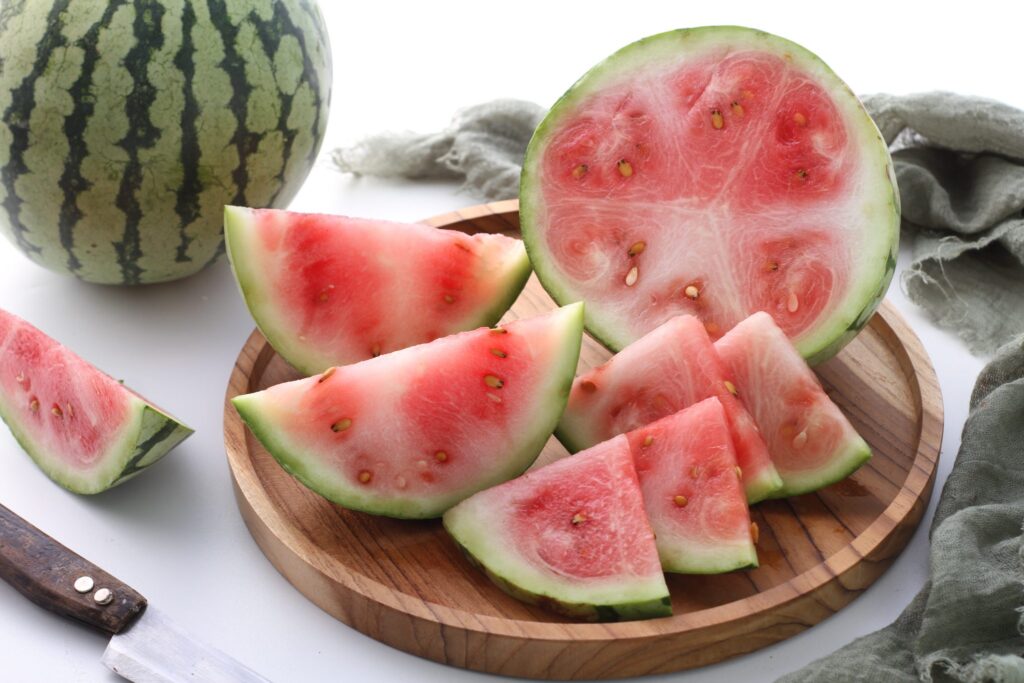This week in the garden when your flowers and vegetables wind down, remove the dead plants to trash bags. This removes the potential overwintering fungus spores and insect eggs for next year. This also helps with aster yellows in the annual bed.

Around the vegetable garden, I have buffalo burs with potato beetle larvae. Both the potato beetles and buffalo burs are native to the area. Since the buffalo burs belong to the potato family, you will find the larva on the buffalo burs. If the population of the larva is too great, they will attack potato plants.

The weed of the week is the mullein. A tall growing (up to 6 feet) yellow flowering weed with a long taproot. Since these plants are biennials, they start out as a rosette the first year and then flower the second year. Settlers brought this plant westward because it was a treatment for asthma, chest colds, and bronchitis. Settlers planted it also for its yellow flowers like they did hollyhocks. Both survive with little rain. The weedy mullein has many seeds which can last years in the soil. It is also hard to kill with an herbicide because of its fuzzy leaves. Being a “cool” flower, horticulturists have created hybrid mulleins that are not invasive and come in colors of yellow, pink, white, and purple.

Some people have had tasteless muskmelon and watermelon with large white cores. This was caused by the hot, dry weather this summer and now. You can still eat them, but the white areas might have a different taste. How can you tell if the watermelon is ripe? Where the fruit is attached to the main stem, there is a little tendril. The tendril should be brown and dry.
They also have questions about fertilizing a lawn. A fall application of fertilizer on the first of September is recommended. If you missed this time, you could apply a winter fertilizer on October 4 to 5 weeks before the ground freezes. The ground usually freezes around Thanksgiving to Christmas (but your guess is as good as mine). The winter application promotes root growth for better winter survivability and a quicker green-up in the spring.
Parsnips and carrots will get sweeter if left in the garden after a good hard freeze. The cold turns the starch into sugar making the vegetables much sweeter.
